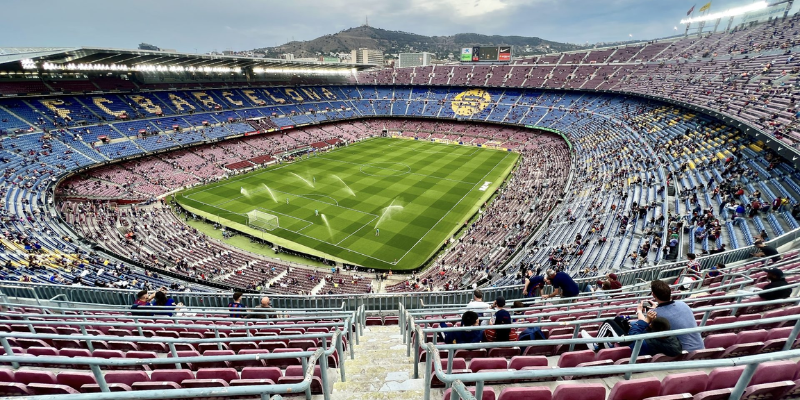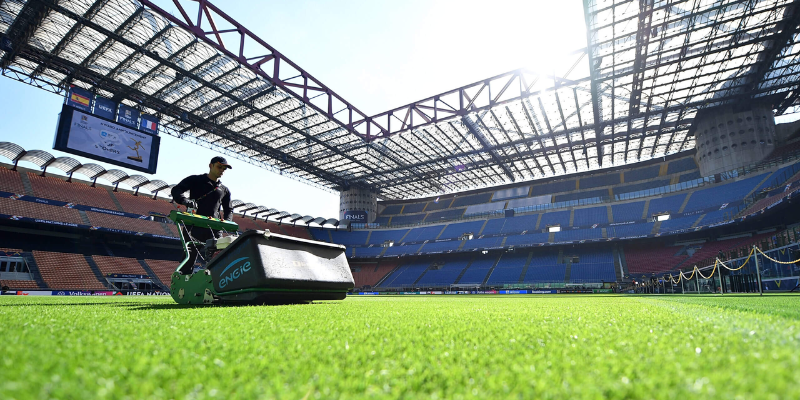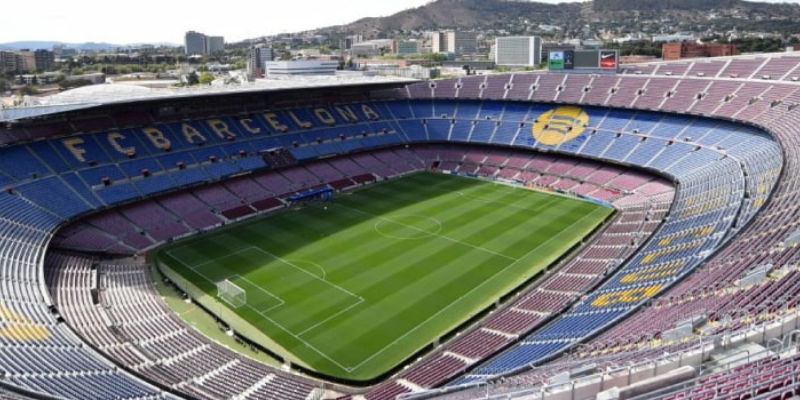Italy is a football country where stadiums are more than concrete and seats — they are battlegrounds of emotion, temples of history, witnesses to legends born in traffic of banners and chants. In this article, QuraGoal will take you on a journey through the most iconic stadiums in Serie A, places where rivalries breathe deeply, where every inch of turf feels sacred, and where every matchday carries echoes of dynasties past.
What Makes a Stadium Iconic?

Before we traverse Italy’s great grounds, let’s define what “iconic” means in this context. A stadium earns this status through a combination of:
- Historical significance — hosting key finals, legendary matches, international tournaments
- Atmosphere — the passion, acoustics, symbolism of the curves, curves, and terraces
- Architectural identity — uniqueness, elements that distinguish one from the generic
- Club identity and continuity — the bond between club, city, and home
- Memorable moments — titles won, underdog victories, European nights
With these criteria in mind, here are some of the most revered stadiums in Serie A.
Stadio Giuseppe Meazza (San Siro), Milan
No list of the most iconic stadiums in Serie A can ever omit San Siro. Officially named Stadio Giuseppe Meazza, this epic coliseum has been the shared home of AC Milan and Inter Milan since 1947. Its twin spiraling towers and steep curves have made it a global symbol of Italian football. The pitch has borne the boots of legends: Maldini, Baresi, Van Basten, Kaká, Shevchenko, Messi, Ibrahimović.
Over its life, it has evolved — added tiers, modernized roofs, transformed into an all-seater stadium. But its soul remains the same: a cauldron of noise, color, pride.
(In 2025, Milan’s city council approved the sale to AC Milan and Inter, clearing the path for a new stadium to replace San Siro — yet many fans insist a part of the original structure must live on.)
Today, as the old giant’s days seem numbered, its myth only intensifies.
Stadio Olimpico, Rome
The capital’s grand arena — Stadio Olimpico — sits within the rich folds of Roman history. Home to both AS Roma and SS Lazio, this stadium is Italy’s second-largest and a venue that blends football with poetry.
Built in the early 1950s and heavily renovated for the 1990 World Cup, the Olimpico has hosted two European Cup finals (1977, 1984), the 1990 World Cup final, and numerous national team matches. Its curves, the Foro Italico setting, and the proximity to Rome’s ancient skyline give it an aura that feels almost timeless.
Matches here are dramatic: derbies between Roma and Lazio carry political and emotional weight. The stadium has witnessed title-deciders, heartbreak, joy, and the weight of expectations.
Stadio Diego Armando Maradona (formerly San Paolo), Naples

Down in the south, where passion burns hot, stands a fortress that resonates with beliefs: the Stadio Diego Armando Maradona in Naples. Formerly known as Stadio San Paolo, this ground is the beating heart of Neapolitan identity.
With a capacity of around 54,700, it may not tower over others, but its atmosphere is unmatched. It hosted matches in the 1990 World Cup (including a semifinal), many European nights, and countless historic Napoli campaigns. After Maradona’s death in 2020, the stadium’s name was changed to honor its greatest icon.
The stadium’s location in Fuorigrotta, the sea breeze, the passionate chants echoing through neighborhoods — it all feeds Napoli’s mythos. Yet in 2025, Napoli announced plans to build a new stadium, casting the future of Maradona’s home into uncertainty.
When every noise feels amplified, when flares light whole sections, when every goal is a crescendo — that’s the kind of soul only this stadium holds.
Allianz Stadium (Juventus Stadium), Turin
Modern, sharp, intimate — Juventus’ Allianz Stadium (often just called “Juventus Stadium”) is one of Italy’s finest examples of what a club-owned stadium can offer. Opened in 2011, it was built on the ruins of the old Stadio delle Alpi and became one of the first major Italian clubs to control their own ground.
With a capacity of ~41,700, its strength lies in closeness and control. No runaway seats, no excessive distances — every fan feels part of the show. The atmosphere, especially during big matches, is razor-edged. It has hosted the 2014 Europa League Final and a 2022 Women’s Champions League Final, showcasing its credentials as a top-tier venue.
Juventus’ stadium represents a modern shift in Italy: from state-owned, aging venues to sleek, efficient, club-governed arenas.
Stadio Artemio Franchi, Florence & Stadio Luigi Ferraris, Genoa

Iconic doesn’t always mean the biggest. Two stadiums embody old-school football romance:
- Stadio Artemio Franchi (Fiorentina, Florence): Opened in 1931, this is one of Italian football’s architectural gems. Designed by the famed architect Pier Luigi Nervi, its 1930s lines and integration with the cityscape make it a visual delight. Matchdays here pulse with Tuscan pride.
- Stadio Luigi Ferraris (Genoa / Sampdoria, Genoa): Dating back to 1911 (though many renovations later), Luigi Ferraris is a stadium where tradition lingers. It has hosted many Derby della Lanterna (the local derby), produced seismic crowd moments, and remains one of the most atmospheric grounds in Serie A.
What About Others?
Italy has dozens of stadiums that carry charm, from Stadio Renato Dall’Ara in Bologna, to Stadio Marcantonio Bentegodi in Verona, to newer or renovated grounds like MAPEI Stadium in Reggio Emilia. While they may not reach “iconic” status nationally, they contribute to the complete tapestry of Serie A, each holding local significance.
Why These Stadiums Resonate
When fans ask for the most iconic stadiums in Serie A, they are not after mere size or capacity ranks. They seek identity — the echo of chants, the imprint of history, the architecture that frames memory.
- San Siro: grandeur, rivalry, legacy
- Olimpico: national stage, dual identity, eternal Rome
- Maradona: emotion, local pride, devotion
- Allianz: modern club ownership, efficiency, sightlines
- Artemio Franchi & Luigi Ferraris: character, architecture, faithful atmospheres
These grounds do more than host matches: they become characters in the stories of clubs, of players, of cities.
Conclusion
The list of most iconic stadiums in Serie A reveals more than architecture: it reveals the soul of Italian football. From San Siro’s grandiosity to Naples’ emotional fortress, each stadium carries in its stands the laughter, tears, dreams, and heartbreak of generations.
As Italy plans and debates new builds, renovations, and futures, these stadiums remind us why football is more than a game here — it is craftsmanship, memory, poetry in motion.
If you want deep dives, photos, or matchday guides for any of these stadiums — San Siro, Olimpico, Maradona, Allianz — just say the word. QuraGoal will help you get inside the stadiums as well as the stories they tell.



